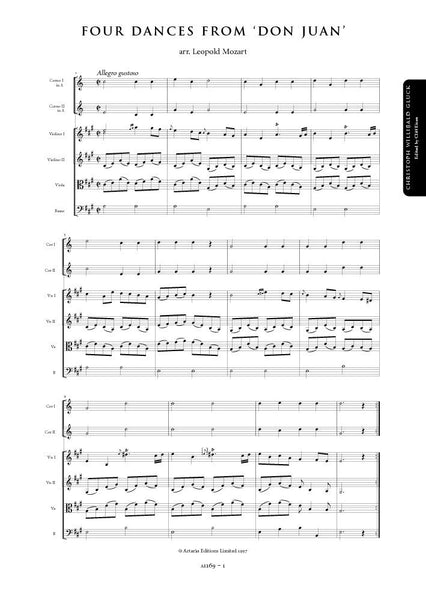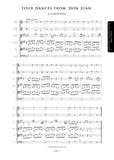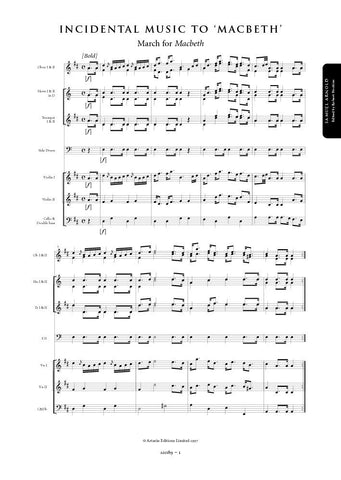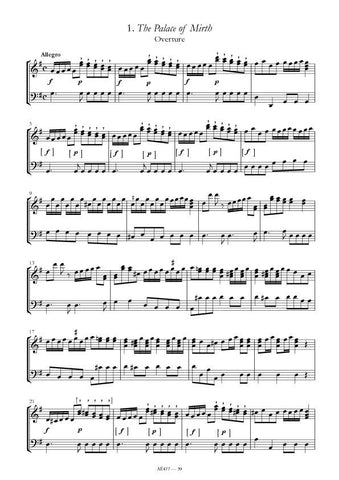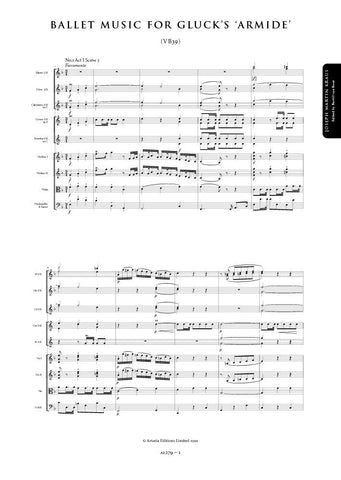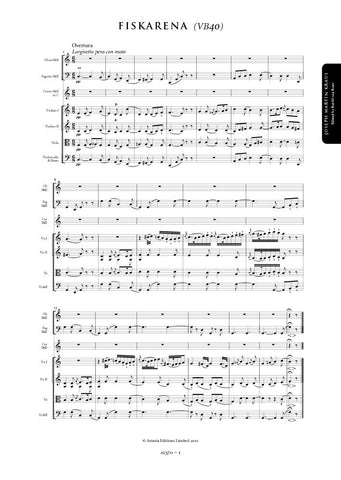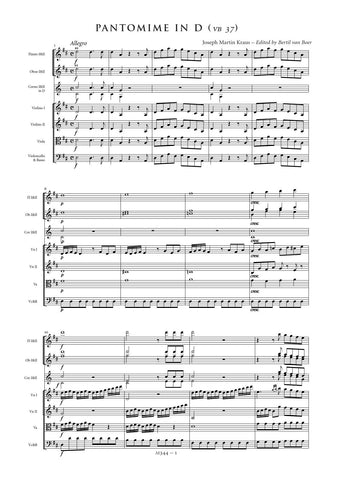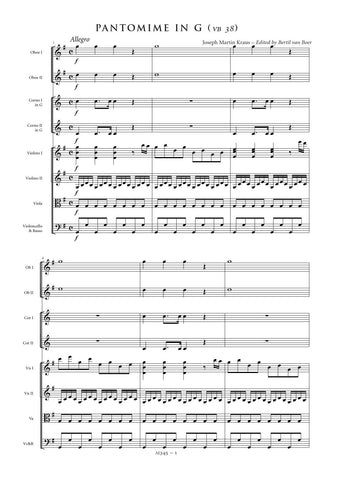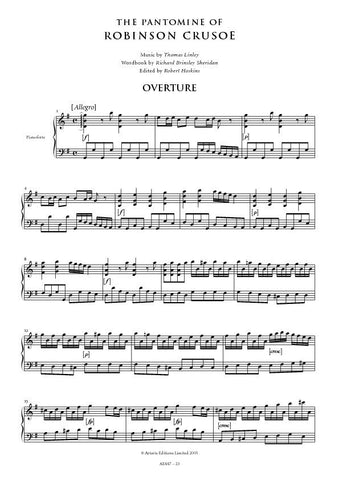Details
|
Leopold Mozart also copied our four dances from Gluck's ballet Don Juan (Vienna, 1761). His autograph score, now in the Bayerische Staatsbibliothek,Munich (Mus.mss. 7859), is written on a single bifolium, with the dances in the following order: No.18 (fo. 1 r, staves 1-5 and 7- 11); No.1 (fo. 1 v, staves 1-4 and 5-8); No.2 (from fo. 1v, the middle of staves 1-6, to fo. 2r, the middle of staves 1-6); and No.21 (from fo. 2r, the middle of staves 1-6, to fo. 2v, the middle of staves 1-6). There is no contemporary wrapper, nor any attribution on the score; a notation by Aloys Fuchs on a later wrapper attests to Leopold Mozart's handwriting.
The dating of the manuscript is uncertain. Because the paper is of local Salzburg manufacture, it is unlikely to have been copied in Vienna when the Mozarts visited there in 1762 (although it is possible that Leopold took a stock of Salzburg paper with him to the Imperial capital. Atypically, the paper is hand-ruled with twelve staves per side). And a date of 1779-1780, when Don Juan was performed in Salzburg by the travelling troupe of Johann Böhm, is probably too late: this particular paper-type was used in Salzburg only until early 1772. The most probable date of copying is therefore sometime during the 1760s.
Leopold Mozart's source for the dances is unknown. Although the score hews closely to Gluck's original, it nevertheless includes some changes, suggesting it was copied from a secondary or tertiary source. At measure 12 of No.18, for example, Leopold Mozart's autograph has the double stop (sounding) b'/e', where Gluck has a unison b'; in the same dance, at measure 25, Gluck has the dynamic piano in all the parts, while Leopold Mozart writes mez. for. for the first and second violins only. Similarly, in No.21, Leopold writes Maestoso over the first violin part; Gluck has Grazioso. And at measures 4 and 8 of the first violin part, Leopold has two quarter-notes for the first violin, which conflicts with the 8th notes and 8th-rests in the second violin, violas and basses. There also appears to be an intentional change in texture for the string basses at measure 9 (see below).
Throughout this edition, editorial slurs are dotted and editorial dynamics are given in square brackets; added text, including tempo and character indications, is given in italics. Slurs have not been added automatically to connect grace notes and main notes; although Leopold Mozart prescribed the universal performance of such slurs (Versuch einer gründlichen Violinschule [Augsburg, 1756], pp.193-4), even the examples in his book regularly dispense with them. It is not out of the question that the notation of such a slur is significant, and I have accordingly reproduced the text as it stands in the source.
Several details of Leopold Mozart's score are either unclear or ambiguous, especially when compared to Gluck's original. Performers may wish to reconsider the following details.
No.18
Gluck's tempo indication is Allegro giustoso; Leopold Mozart's is Allegro gustoso. In Leopold Mozart's score, slurs are consistently omitted in the first violin, contrasting with the slurred 8ths in the second violin and viola. In Gluck's original, successive 8th-notes in the first violin are slurred.
No. 1
M.7: In the Gluck, the first four 8ths in the first violin are articulated with a stroke on the first note, and a slur connecting the next three notes, contrary to the second violins; in Leopold Mozart's score the slurring is identical in both parts: two slurs of two notes each. Similarly, in the Gluck, the last two 8ths for violin 1 and 2 are given with strokes; Leopold Mozart has slurs.
No.2
Gluck's original includes parts for oboes that double the first violins throughout; these are omitted in Leopold Mozart's score.
No.21
Leopold Mozart gives no tempo or characterization designation; Grazioso has been taken over from Gluck's original.
Throughout, the figure including a quarter note followed by four 8th notes is invariably given in Leopold Mozart's score without articulation. The original sensibly articulates the four 8th notes with dots under a slur (see vn.1: mm. 1 , 5, 7, 17, 23, 25, 35, 37, 39, 41; vn.2:mm. 2, 6, 18, 21, 23, 36, 40; va: mm. 2, 6, 18, 22, 29, 36, 40; basso: mm. 2, 6, 18, 36, 40; horns: 1 , 5, 17, 25, 29, 35, 39). The final 8th of m.26 in the second violins, viola and basso, which involves a pitch change, is an exception: here Leopold Mozart has included articulation for the second violin, which has been added editorially to the viola and basso parts.
Mm.9 and 31, string basses: the original includes a direction to play pizzicato, similar to the first and second violins; Leopold Mozart's score omits the pizzicato for the string basses at m.9. Possibly the change is intentional: Mozart at first wrote pizzicato for the string basses but subsequently crossed it out. On the other hand, pizzicato is indicated at m.31. Accordingly, the passages can be standardized or left to stand as in the autograph, presenting subtle textural differences.
Mm.35-42: Mozart's score sends at m.34 with the direction D:C: [Da Capo], without indicating earlier on or where the dance is to end. Similar to Gluck's original, I have appended measures 1-8 with the difference, however, that the final measure of the piece has not been changed to half-notes.
Cliff Eisen
|




